A new local non-profit is out to aid poor villages in West Africa through sharing their most precious—and in some cases, only—assets: their history and their culture.
Drums for Solar founder Bruce Rhodes was confident he could persuade Californians to support his vision of bringing solar energy to rural West Africa. But first he had to make sure his intended beneficiaries were open to the concept, and that required some extensive cross-cultural communications. Fortunately, Rhodes, a Sebastopol resident, was aided in that by some partners with ties to several of the villages they approached.
 Bruce Rhodes drummingA key component of his plans, Rhodes adds, involves teaching the African villagers—in their own language—how to both install and maintain the new solar arrays they will be getting.
Bruce Rhodes drummingA key component of his plans, Rhodes adds, involves teaching the African villagers—in their own language—how to both install and maintain the new solar arrays they will be getting.
Although it's not the cheapest way to go, Rhodes is committed to acquiring and exporting American-made components for his African projects, underscoring the intangible linkage inherent in the cross-continental exchanges that Drums for Solar facilitates.


 The Russian River Valley is acclaimed for its complex red varietals and the wine made from them. But it wasn't always that way, as a local film-maker has now documented.
The Russian River Valley is acclaimed for its complex red varietals and the wine made from them. But it wasn't always that way, as a local film-maker has now documented.
Long before the grapegrowers and winemakers of the Russian River Valley developed a widely recognized "name" for their products, says local documentarian Joe Nugent, they quickly learned how to tap into regional markets for them.
His film, From Obscurity to Excellence: The Story of Grapes and Wine in the Russian River Valley, has been a five-year project for Nugent, one that grew out of his own, somewhat spontaneous entry into the realm of grape growers in the Russian River Valley.
T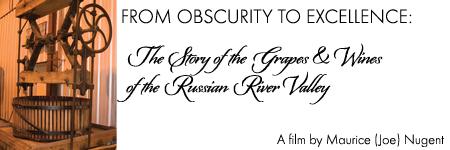 he first public screenings of Joe Nugent's documentary about wine and the Russian River Valley will be at the Wells Fargo Center's East Auditorium on Saturday night, Dec. 1, at 7 and 9 pm. Advance tickets can be purchased online here.
he first public screenings of Joe Nugent's documentary about wine and the Russian River Valley will be at the Wells Fargo Center's East Auditorium on Saturday night, Dec. 1, at 7 and 9 pm. Advance tickets can be purchased online here.
{youtube}5psIECAKKVc{/youtube}
 Where do compostable plastic forks and knives go to die? It’s not where you’d think. In the past few years compostable plastics, synthesized from plants, have exploded onto the market. But are they are not as green as they seem. KRCB’s Danielle Venton reports.
Where do compostable plastic forks and knives go to die? It’s not where you’d think. In the past few years compostable plastics, synthesized from plants, have exploded onto the market. But are they are not as green as they seem. KRCB’s Danielle Venton reports.
Synthetic materials, like compostable plastic, can't go in to compost that is allowed for organic production under the National Organic Program regulations, set by US Department of Agriculture. Lindsay Fernandez-Salvador, program director at the Organic Materials Review Institute says regulations, though they may change in the future, ensure the "organic" label means something.
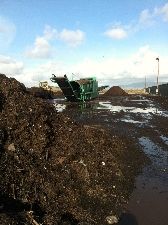 Tim Dewey-Mattia, of the Napa Recycling & Composting Facility, says there is a lot of consumer confusion about how to dispose of compostable plastics. Currently, they are not recyclable nor, at most facilities, compostable. In the future, he'd like to see that changed. (Images:1. Plastic cup. Courtesy of Flickr/rsuehle; 2. The compost pile at Waste Management Redwood Landfill in Novato. Danielle Venton for KRCB.)
Tim Dewey-Mattia, of the Napa Recycling & Composting Facility, says there is a lot of consumer confusion about how to dispose of compostable plastics. Currently, they are not recyclable nor, at most facilities, compostable. In the future, he'd like to see that changed. (Images:1. Plastic cup. Courtesy of Flickr/rsuehle; 2. The compost pile at Waste Management Redwood Landfill in Novato. Danielle Venton for KRCB.)
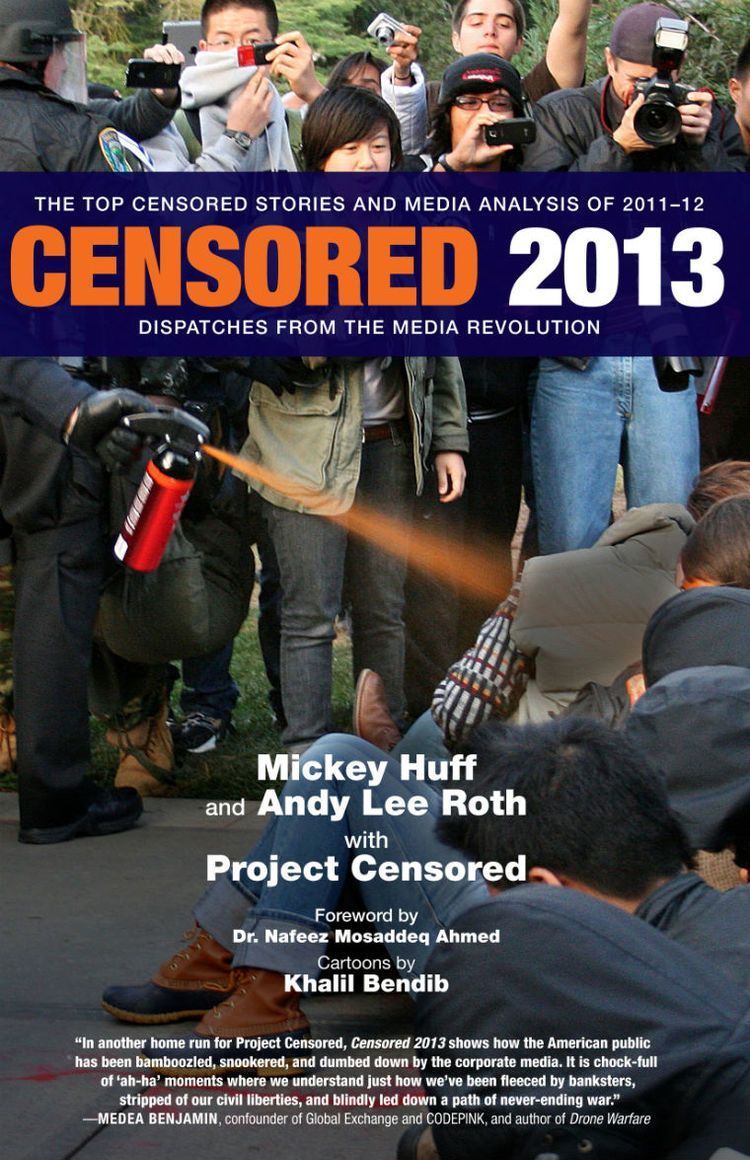 Before the rest of the news media unfurl their end-of-the-year lists of the biggest stories of the past 12 months, Project Censored is out with their Top 25 list of the biggest subjects that got the least coverage.
Before the rest of the news media unfurl their end-of-the-year lists of the biggest stories of the past 12 months, Project Censored is out with their Top 25 list of the biggest subjects that got the least coverage.
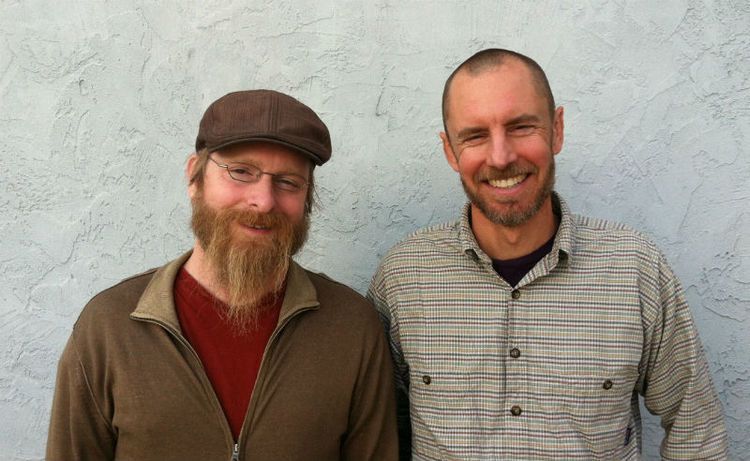 Mickey Huff (left) and Andy Roth of Project Censored (KRCB photo)What was once called the "underground" press is now a global presence--thanks to the Internet--even if much of what it covers gets little attention elsewhere. In choosing his "favorite" censored news story of the past year, Project Censored Director Mickey Huff cites a current issue that echoes back into the 1960s.
Mickey Huff (left) and Andy Roth of Project Censored (KRCB photo)What was once called the "underground" press is now a global presence--thanks to the Internet--even if much of what it covers gets little attention elsewhere. In choosing his "favorite" censored news story of the past year, Project Censored Director Mickey Huff cites a current issue that echoes back into the 1960s.
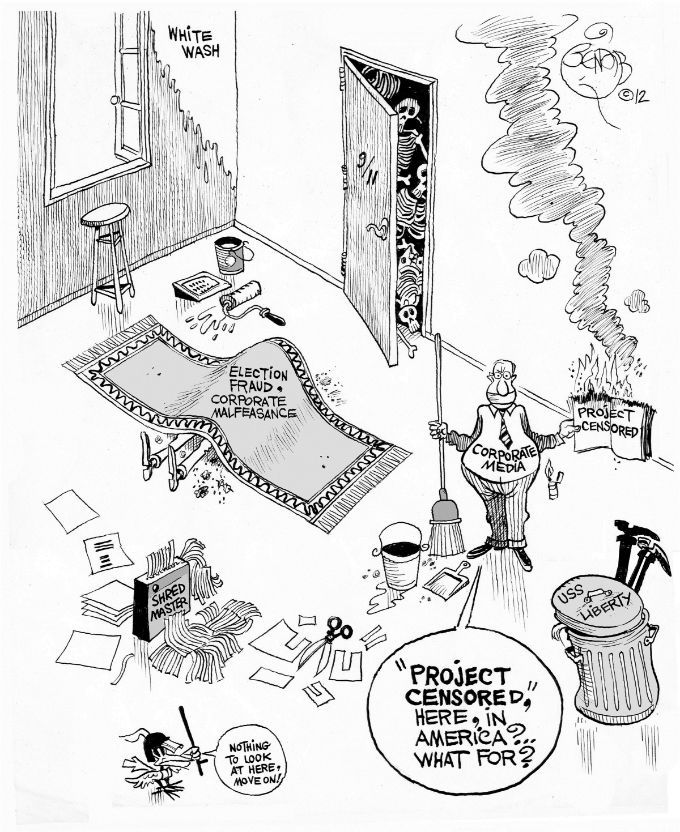 An extra feature in the 2013 Project Censored book, once again, are political cartoons by Oakland's Kalil Bendib (used by permission of Project Censored)Many of the subjects collected for extra attention by Project Censored are stories of dangers, misdeeds and abuses. But not all of them. For Andy Roth, co-author of the Censored 2013 volume, a favorite from 2011-12 is actually a positive economic development.
An extra feature in the 2013 Project Censored book, once again, are political cartoons by Oakland's Kalil Bendib (used by permission of Project Censored)Many of the subjects collected for extra attention by Project Censored are stories of dangers, misdeeds and abuses. But not all of them. For Andy Roth, co-author of the Censored 2013 volume, a favorite from 2011-12 is actually a positive economic development.
Selecting the topics that will be featured in Project Censored's annual list of the Top 25 most under-reported stories is a complex year-long process. And every once in a while, says Andy Roth, their deliberations are overtaken by external events, as happened with one promising candidate last year.
A book release party for the new Project Censored anthology with many of the contributors speaking, will be held this coming Saturday evening, Dec. 1, at 7 pm in the Arlene Francis Center, 99 Sixth Street in Santa Rosa.
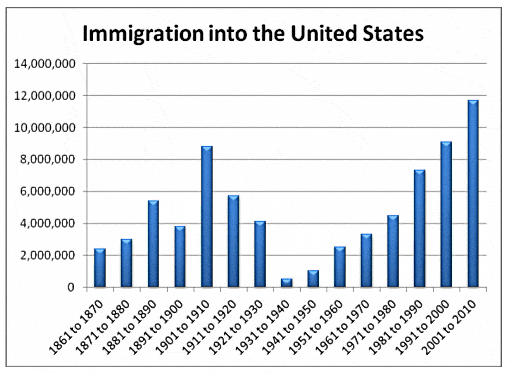 How many more residents can the environment of United States support? That question hasn't been comprehensively studied, but there's a group that says that it should be.
How many more residents can the environment of United States support? That question hasn't been comprehensively studied, but there's a group that says that it should be.
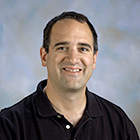 Phil CafaroThe idea of a national study of the environmental impacts of population growth through immigration is not new, notes Phil Cafaro, president of Progressives for Immigration Reform and a Philosophy professor at Colorado State University. He's hoping that it's time is finally arriving.
Phil CafaroThe idea of a national study of the environmental impacts of population growth through immigration is not new, notes Phil Cafaro, president of Progressives for Immigration Reform and a Philosophy professor at Colorado State University. He's hoping that it's time is finally arriving.
It should be noted that there are those, including some respected civil rights organizations, who skeptically view Cafaro's organization as a front for deceptive political efforts to "greenwash" immigration politics.
The graph on the left, prepared by Cafaro, shows projected US population gains through the end of this century under four quite different immigration ceilings.
The two components of population growth are immigration and fertility, Cafaro, says, and in the United States' recent past, the two have been compounding.

 Live Radio
Live Radio
